
griptape
Modular Python framework for AI agents and workflows with chain-of-thought reasoning, tools, and memory.
Stars: 2235

Griptape is a modular Python framework for building AI-powered applications that securely connect to your enterprise data and APIs. It offers developers the ability to maintain control and flexibility at every step. Griptape's core components include Structures (Agents, Pipelines, and Workflows), Tasks, Tools, Memory (Conversation Memory, Task Memory, and Meta Memory), Drivers (Prompt and Embedding Drivers, Vector Store Drivers, Image Generation Drivers, Image Query Drivers, SQL Drivers, Web Scraper Drivers, and Conversation Memory Drivers), Engines (Query Engines, Extraction Engines, Summary Engines, Image Generation Engines, and Image Query Engines), and additional components (Rulesets, Loaders, Artifacts, Chunkers, and Tokenizers). Griptape enables developers to create AI-powered applications with ease and efficiency.
README:
Griptape is a Python framework designed to simplify the development of generative AI (genAI) applications. It offers a set of straightforward, flexible abstractions for working with areas such as Large Language Models (LLMs), Retrieval-Augmented Generation (RAG), and much more.
- 🤖 Agents consist of a single Task, configured for Agent-specific behavior.
- 🔄 Pipelines organize a sequence of Tasks so that the output from one Task may flow into the next.
- 🌐 Workflows configure Tasks to operate in parallel.
Tasks are the core building blocks within Structures, enabling interaction with Engines, Tools, and other Griptape components.
- 💬 Conversation Memory enables LLMs to retain and retrieve information across interactions.
- 🗃️ Task Memory keeps large or sensitive Task outputs off the prompt that is sent to the LLM.
- 📊 Meta Memory enables passing in additional metadata to the LLM, enhancing the context and relevance of the interaction.
Drivers facilitate interactions with external resources and services in Griptape. They allow you to swap out functionality and providers with minimal changes to your business logic.
- 🗣️ Prompt Drivers: Manage textual and image interactions with LLMs.
- 🤖 Assistant Drivers: Enable interactions with various “assistant” services.
- 📜 Ruleset Drivers: Load and apply rulesets from external sources.
- 🧠 Conversation Memory Drivers: Store and retrieve conversational data.
- 📡 Event Listener Drivers: Forward framework events to external services.
- 🏗️ Structure Run Drivers: Execute structures locally or in the cloud.
- 🔢 Embedding Drivers: Generate vector embeddings from textual inputs.
- 🔀 Rerank Drivers: Rerank search results for improved relevance.
- 💾 Vector Store Drivers: Manage the storage and retrieval of embeddings.
- 🗂️ File Manager Drivers: Handle file operations on local and remote storage.
- 💼 SQL Drivers: Interact with SQL databases.
- 🎨 Image Generation Drivers: Create images from text descriptions.
- 🗣️ Text to Speech Drivers: Convert text to speech.
- 🎙️ Audio Transcription Drivers: Convert audio to text.
- 🔍 Web Search Drivers: Search the web for information.
- 🌐 Web Scraper Drivers: Extract data from web pages.
- 📈 Observability Drivers: Send trace and event data to observability platforms.
Tools provide capabilities for LLMs to interact with data and services. Griptape includes a variety of built-in Tools, and makes it easy to create custom Tools.
Engines wrap Drivers and provide use-case-specific functionality:
- 📊 RAG Engine is an abstraction for implementing modular Retrieval Augmented Generation (RAG) pipelines.
- 🛠️ Extraction Engine extracts JSON or CSV data from unstructured text.
- 📝 Summary Engine generates summaries from textual content.
- ✅ Eval Engine evaluates and scores the quality of generated text.
- 📐 Rulesets steer LLM behavior with minimal prompt engineering.
- 🔄 Loaders load data from various sources.
- 🏺 Artifacts allow for passing data of different types between Griptape components.
- ✂️ Chunkers segment texts into manageable pieces for diverse text types.
- 🔢 Tokenizers count the number of tokens in a text to not exceed LLM token limits.
Please visit the docs for information on installation and usage.
Check out Griptape Trade School for free online courses.
Here's a minimal example of griptape:
from griptape.drivers.prompt.openai import OpenAiChatPromptDriver
from griptape.rules import Rule
from griptape.tasks import PromptTask
task = PromptTask(
prompt_driver=OpenAiChatPromptDriver(model="gpt-4o"),
rules=[Rule("Keep your answer to a few sentences.")],
)
result = task.run("How do I do a kickflip?")
print(result.value)To do a kickflip, start by positioning your front foot slightly angled near the middle of the board and your back foot on the tail.
Pop the tail down with your back foot while flicking the edge of the board with your front foot to make it spin.
Jump and keep your body centered over the board, then catch it with your feet and land smoothly. Practice and patience are key!
Here is a concise example using griptape to research open source projects:
from griptape.drivers.prompt.openai_chat_prompt_driver import OpenAiChatPromptDriver
from griptape.drivers.web_search.duck_duck_go import DuckDuckGoWebSearchDriver
from griptape.rules import Rule, Ruleset
from griptape.structures import Workflow
from griptape.tasks import PromptTask, TextSummaryTask
from griptape.tools import WebScraperTool, WebSearchTool
from griptape.utils import StructureVisualizer
from pydantic import BaseModel
class Feature(BaseModel):
name: str
description: str
emoji: str
class Output(BaseModel):
answer: str
key_features: list[Feature]
projects = ["griptape", "langchain", "crew-ai", "pydantic-ai"]
prompt_driver = OpenAiChatPromptDriver(model="gpt-4o")
workflow = Workflow(
tasks=[
[
PromptTask(
id=f"project-{project}",
input="Tell me about the open source project: {{ project }}.",
prompt_driver=prompt_driver,
context={"project": projects},
output_schema=Output,
tools=[
WebSearchTool(
web_search_driver=DuckDuckGoWebSearchDriver(),
),
WebScraperTool(),
],
child_ids=["summary"],
)
for project in projects
],
TextSummaryTask(
input="{{ parents_output_text }}",
id="summary",
rulesets=[
Ruleset(
name="Format", rules=[Rule("Be detailed."), Rule("Include emojis.")]
)
],
),
]
)
workflow.run()
print(StructureVisualizer(workflow).to_url()) Output: Here's a detailed summary of the open-source projects mentioned:
1. **Griptape** 🛠️:
- Griptape is a modular Python framework designed for creating AI-powered applications. It focuses on securely connecting to
enterprise data and APIs. The framework provides structured components like Agents, Pipelines, and Workflows, allowing for both
parallel and sequential operations. It includes built-in tools and supports custom tool creation for data and service
interaction.
2. **LangChain** 🔗:
- LangChain is a framework for building applications powered by Large Language Models (LLMs). It offers a standard interface
for models, embeddings, and vector stores, facilitating real-time data augmentation and model interoperability. LangChain
integrates with various data sources and external systems, making it adaptable to evolving technologies.
3. **CrewAI** 🤖:
- CrewAI is a standalone Python framework for orchestrating multi-agent AI systems. It allows developers to create and
manage AI agents that collaborate on complex tasks. CrewAI emphasizes ease of use and scalability, providing tools and
documentation to help developers build AI-powered solutions.
4. **Pydantic-AI** 🧩:
- Pydantic-AI is a Python agent framework that simplifies the development of production-grade applications with Generative
AI. Built on Pydantic, it supports various AI models and provides features like type-safe design, structured response
validation, and dependency injection. Pydantic-AI aims to bring the ease of FastAPI development to AI applications.
These projects offer diverse tools and frameworks for developing AI applications, each with unique features and capabilities
tailored to different aspects of AI development.
graph TD;
griptape-->summary;
langchain-->summary;
pydantic-ai-->summary;
crew-ai-->summary;Griptape uses Semantic Versioning.
Thank you for considering contributing to Griptape! Before you start, please review our Contributing Guidelines.
Griptape is available under the Apache 2.0 License.
For Tasks:
Click tags to check more tools for each tasksFor Jobs:
Alternative AI tools for griptape
Similar Open Source Tools

griptape
Griptape is a modular Python framework for building AI-powered applications that securely connect to your enterprise data and APIs. It offers developers the ability to maintain control and flexibility at every step. Griptape's core components include Structures (Agents, Pipelines, and Workflows), Tasks, Tools, Memory (Conversation Memory, Task Memory, and Meta Memory), Drivers (Prompt and Embedding Drivers, Vector Store Drivers, Image Generation Drivers, Image Query Drivers, SQL Drivers, Web Scraper Drivers, and Conversation Memory Drivers), Engines (Query Engines, Extraction Engines, Summary Engines, Image Generation Engines, and Image Query Engines), and additional components (Rulesets, Loaders, Artifacts, Chunkers, and Tokenizers). Griptape enables developers to create AI-powered applications with ease and efficiency.
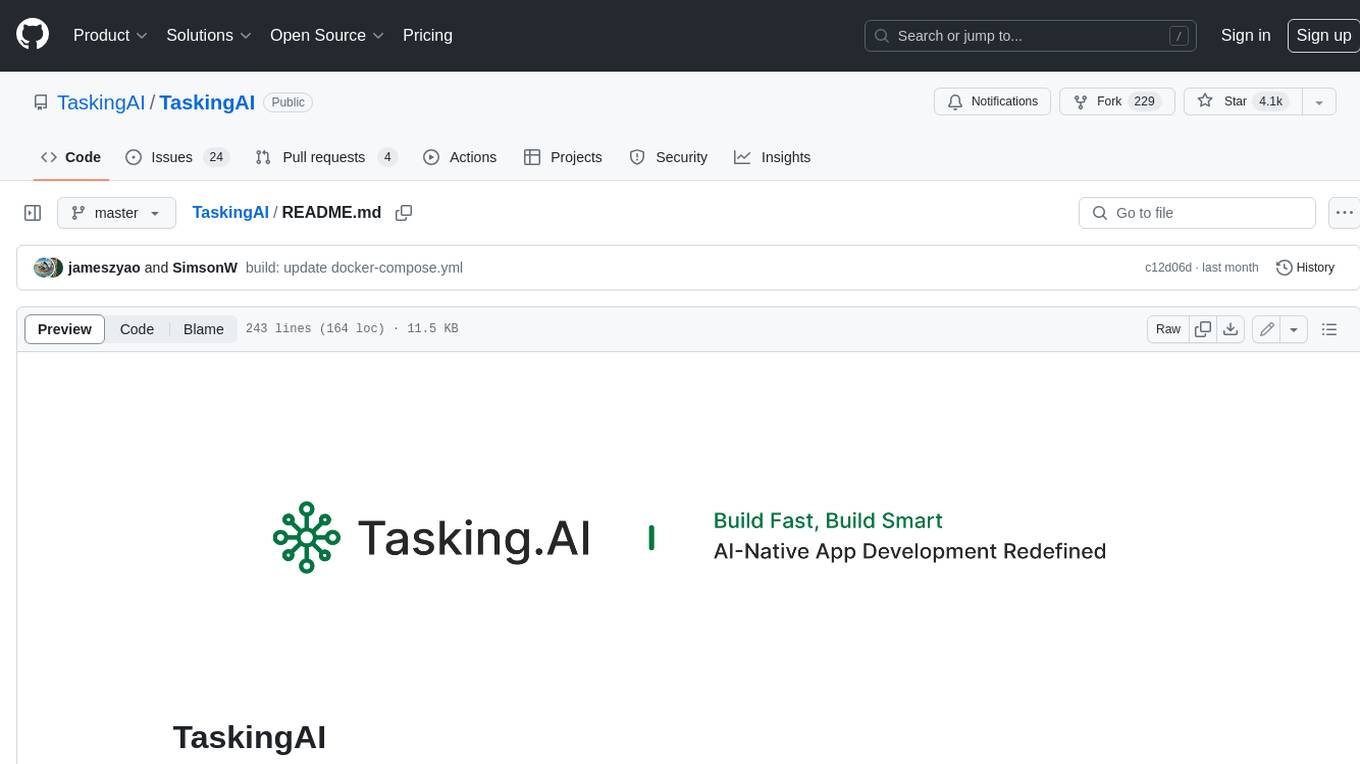
TaskingAI
TaskingAI brings Firebase's simplicity to **AI-native app development**. The platform enables the creation of GPTs-like multi-tenant applications using a wide range of LLMs from various providers. It features distinct, modular functions such as Inference, Retrieval, Assistant, and Tool, seamlessly integrated to enhance the development process. TaskingAI’s cohesive design ensures an efficient, intelligent, and user-friendly experience in AI application development.
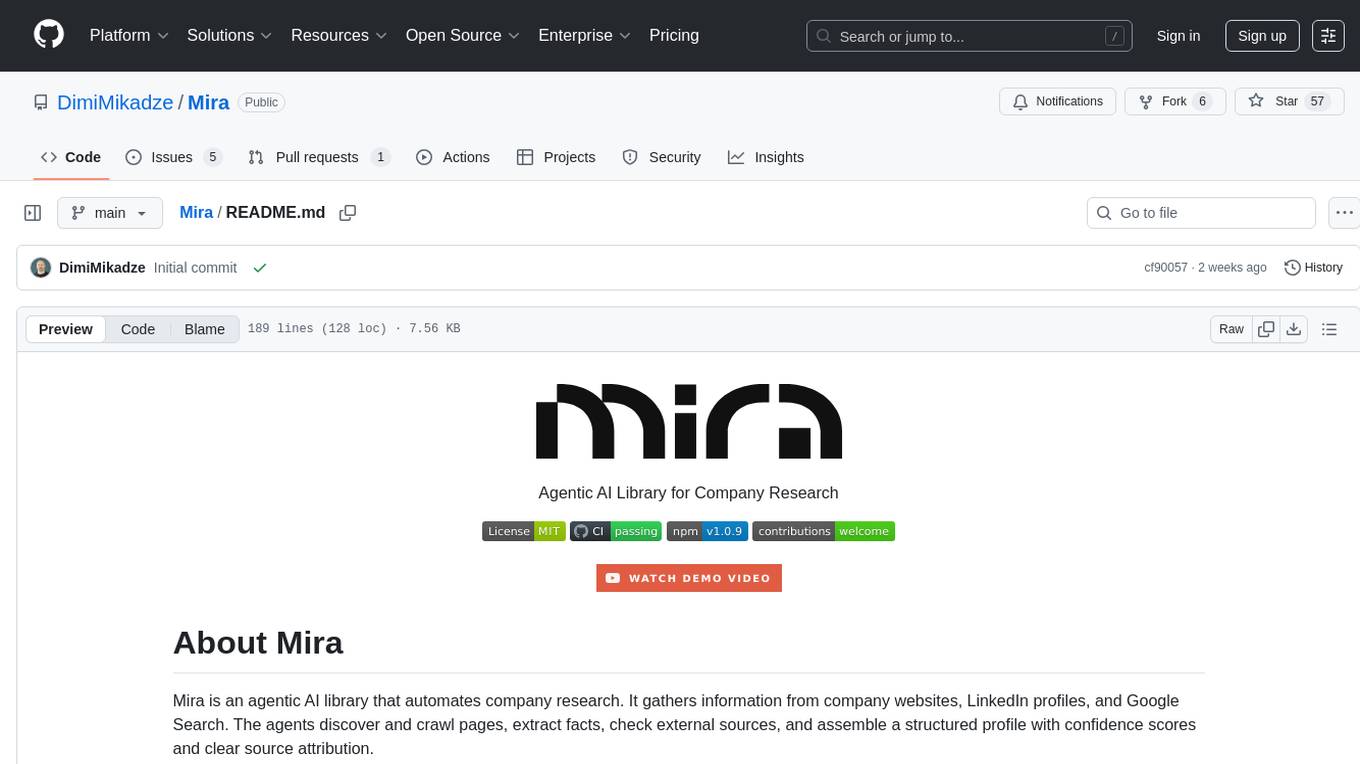
Mira
Mira is an agentic AI library designed for automating company research by gathering information from various sources like company websites, LinkedIn profiles, and Google Search. It utilizes a multi-agent architecture to collect and merge data points into a structured profile with confidence scores and clear source attribution. The core library is framework-agnostic and can be integrated into applications, pipelines, or custom workflows. Mira offers features such as real-time progress events, confidence scoring, company criteria matching, and built-in services for data gathering. The tool is suitable for users looking to streamline company research processes and enhance data collection efficiency.
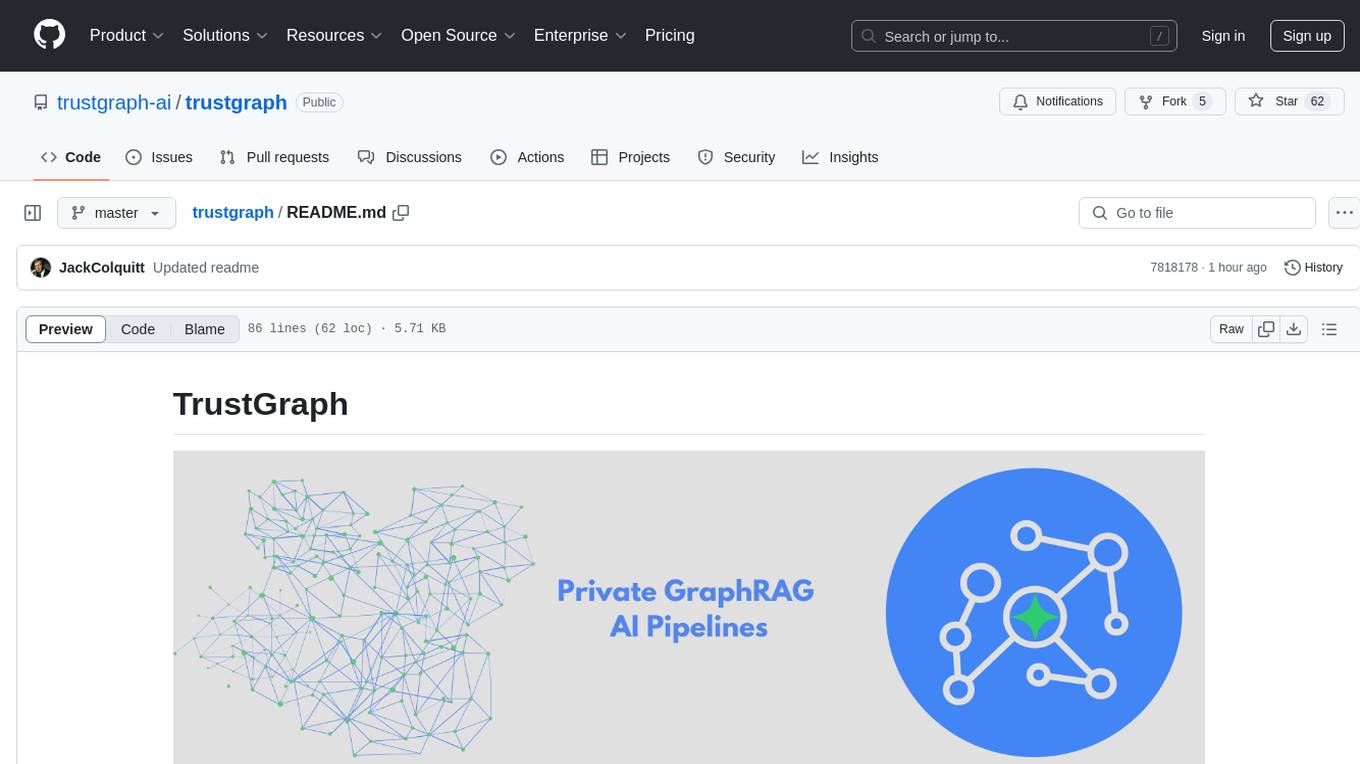
trustgraph
TrustGraph is a tool that deploys private GraphRAG pipelines to build a RDF style knowledge graph from data, enabling accurate and secure `RAG` requests compatible with cloud LLMs and open-source SLMs. It showcases the reliability and efficiencies of GraphRAG algorithms, capturing contextual language flags missed in conventional RAG approaches. The tool offers features like PDF decoding, text chunking, inference of various LMs, RDF-aligned Knowledge Graph extraction, and more. TrustGraph is designed to be modular, supporting multiple Language Models and environments, with a plug'n'play architecture for easy customization.
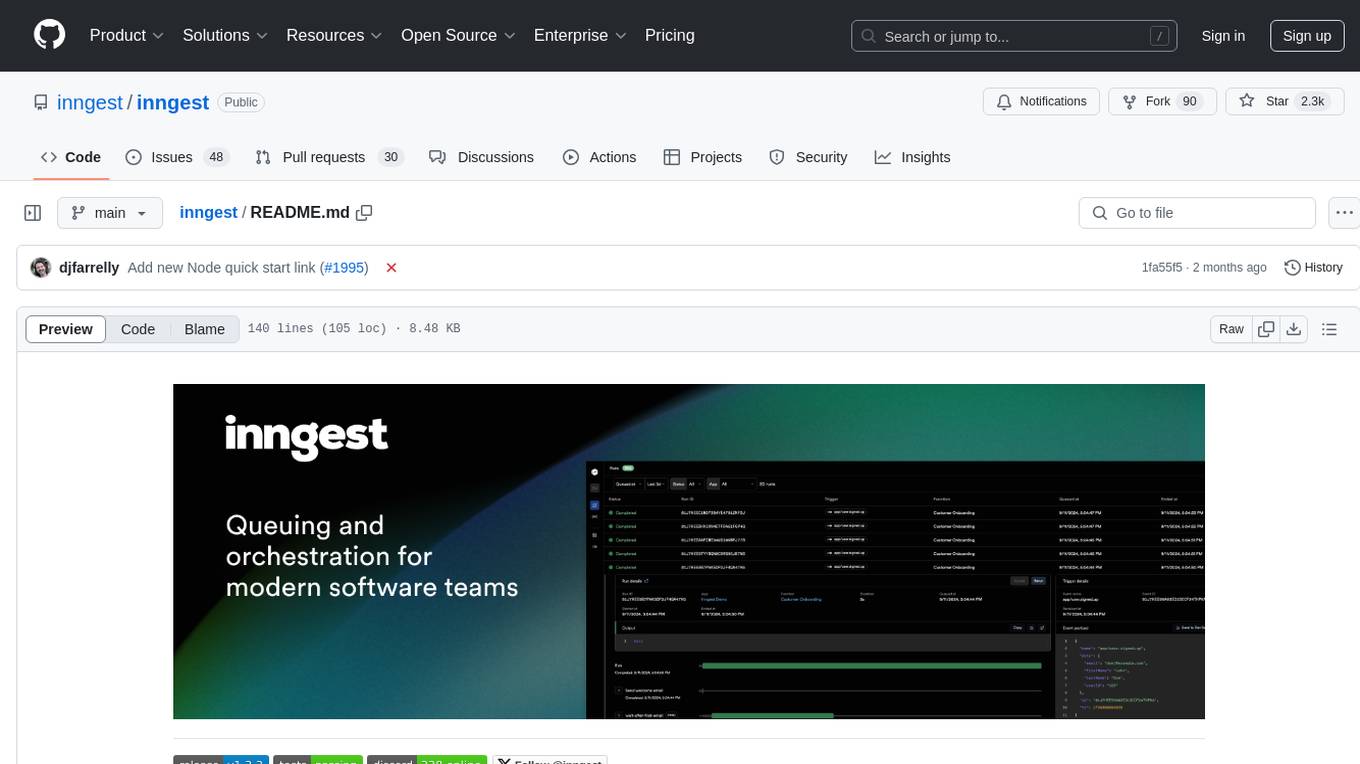
inngest
Inngest is a platform that offers durable functions to replace queues, state management, and scheduling for developers. It allows writing reliable step functions faster without dealing with infrastructure. Developers can create durable functions using various language SDKs, run a local development server, deploy functions to their infrastructure, sync functions with the Inngest Platform, and securely trigger functions via HTTPS. Inngest Functions support retrying, scheduling, and coordinating operations through triggers, flow control, and steps, enabling developers to build reliable workflows with robust support for various operations.
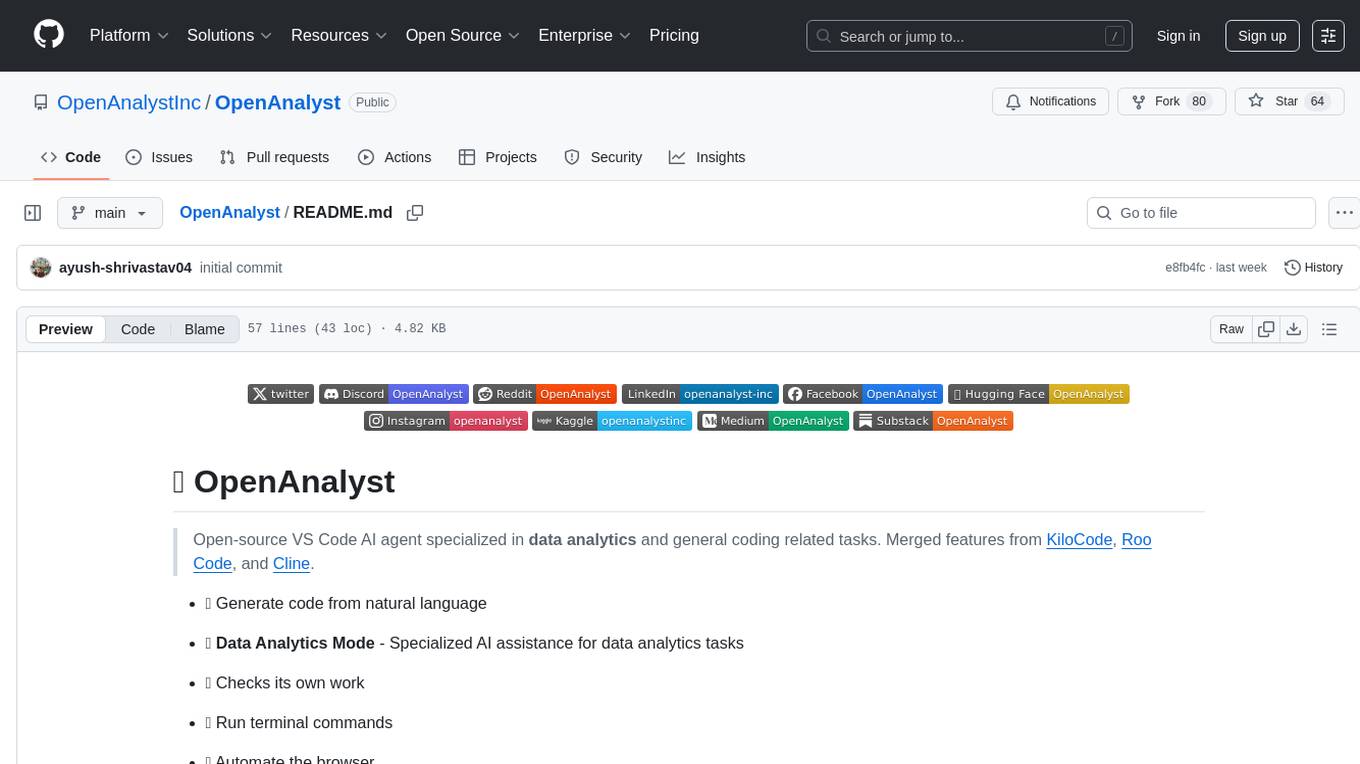
OpenAnalyst
OpenAnalyst is an open-source VS Code AI agent specialized in data analytics and general coding tasks. It merges features from KiloCode, Roo Code, and Cline, offering code generation from natural language, data analytics mode, self-checking, terminal command running, browser automation, latest AI models, and API keys option. It supports multi-mode operation for roles like Data Analyst, Code, Ask, and Debug. OpenAnalyst is a fork of KiloCode, combining the best features from Cline, Roo Code, and KiloCode, with enhancements like MCP Server Marketplace, automated refactoring, and support for latest AI models.

Linguflex
Linguflex is a project that aims to simulate engaging, authentic, human-like interaction with AI personalities. It offers voice-based conversation with custom characters, alongside an array of practical features such as controlling smart home devices, playing music, searching the internet, fetching emails, displaying current weather information and news, assisting in scheduling, and searching or generating images.
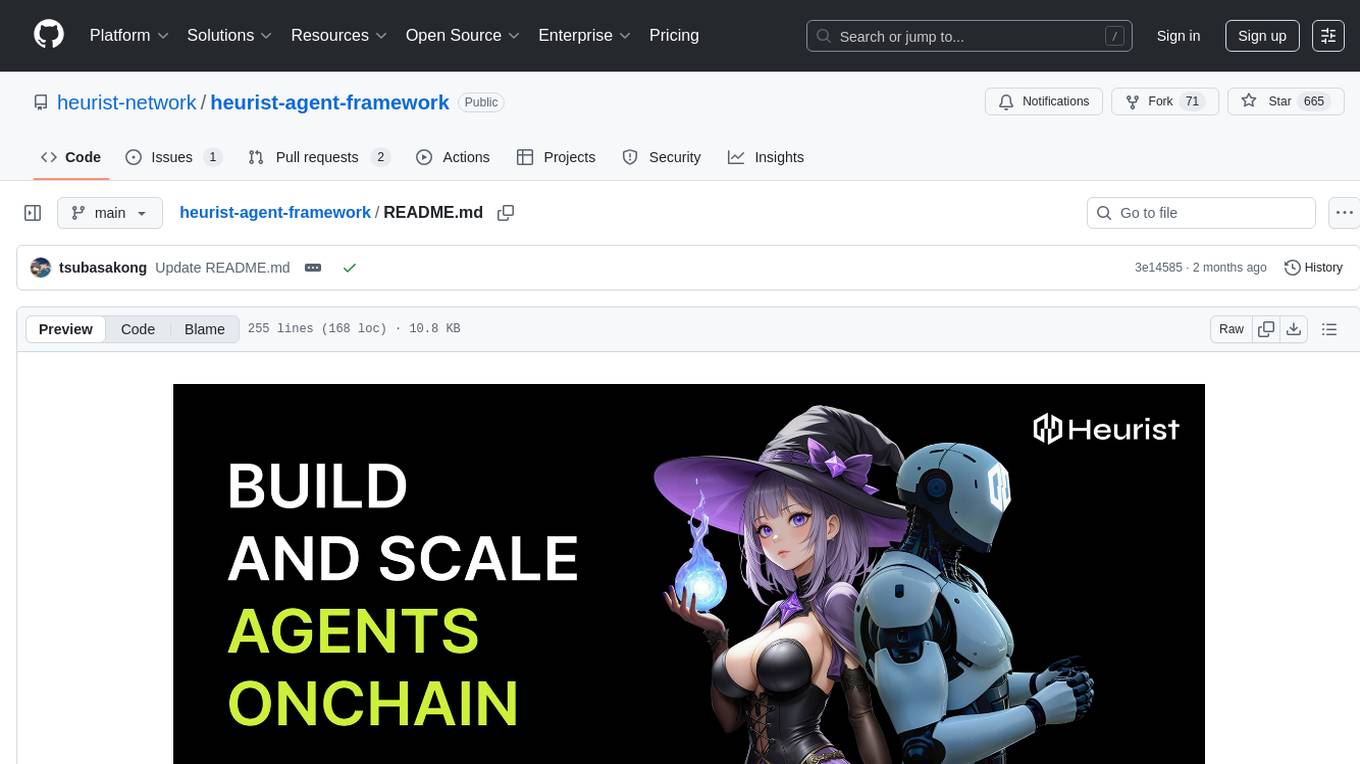
heurist-agent-framework
Heurist Agent Framework is a flexible multi-interface AI agent framework that allows processing text and voice messages, generating images and videos, interacting across multiple platforms, fetching and storing information in a knowledge base, accessing external APIs and tools, and composing complex workflows using Mesh Agents. It supports various platforms like Telegram, Discord, Twitter, Farcaster, REST API, and MCP. The framework is built on a modular architecture and provides core components, tools, workflows, and tool integration with MCP support.

kserve
KServe provides a Kubernetes Custom Resource Definition for serving predictive and generative machine learning (ML) models. It encapsulates the complexity of autoscaling, networking, health checking, and server configuration to bring cutting edge serving features like GPU Autoscaling, Scale to Zero, and Canary Rollouts to ML deployments. KServe enables a simple, pluggable, and complete story for Production ML Serving including prediction, pre-processing, post-processing, and explainability. It is a standard, cloud agnostic Model Inference Platform for serving predictive and generative AI models on Kubernetes, built for highly scalable use cases.
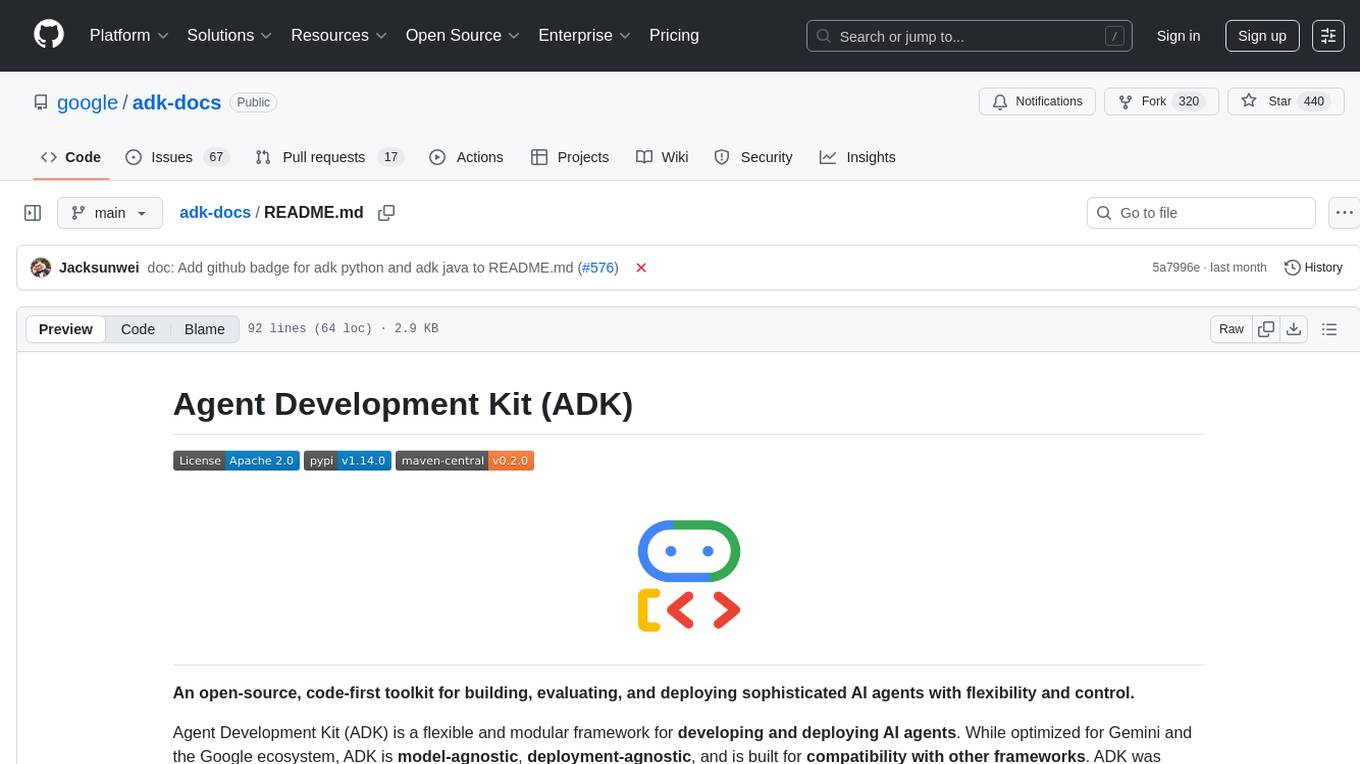
adk-docs
Agent Development Kit (ADK) is an open-source, code-first toolkit for building, evaluating, and deploying sophisticated AI agents with flexibility and control. It is a flexible and modular framework optimized for Gemini and the Google ecosystem, model-agnostic, deployment-agnostic, and compatible with other frameworks. ADK simplifies agent development by making it feel more like software development, enabling developers to create, deploy, and orchestrate agentic architectures from simple tasks to complex workflows.
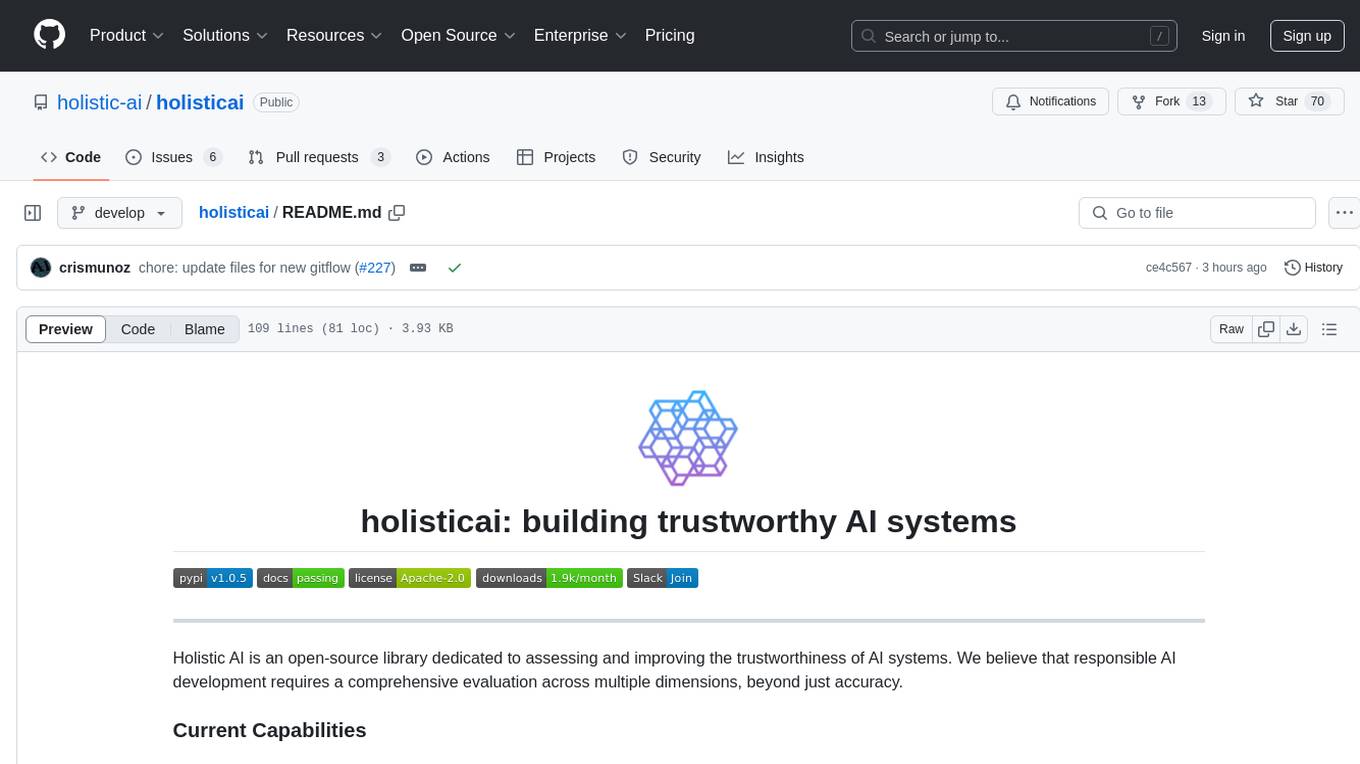
holisticai
Holistic AI is an open-source library dedicated to assessing and improving the trustworthiness of AI systems. It focuses on measuring and mitigating bias, explainability, robustness, security, and efficacy in AI models. The tool provides comprehensive metrics, mitigation techniques, a user-friendly interface, and visualization tools to enhance AI system trustworthiness. It offers documentation, tutorials, and detailed installation instructions for easy integration into existing workflows.
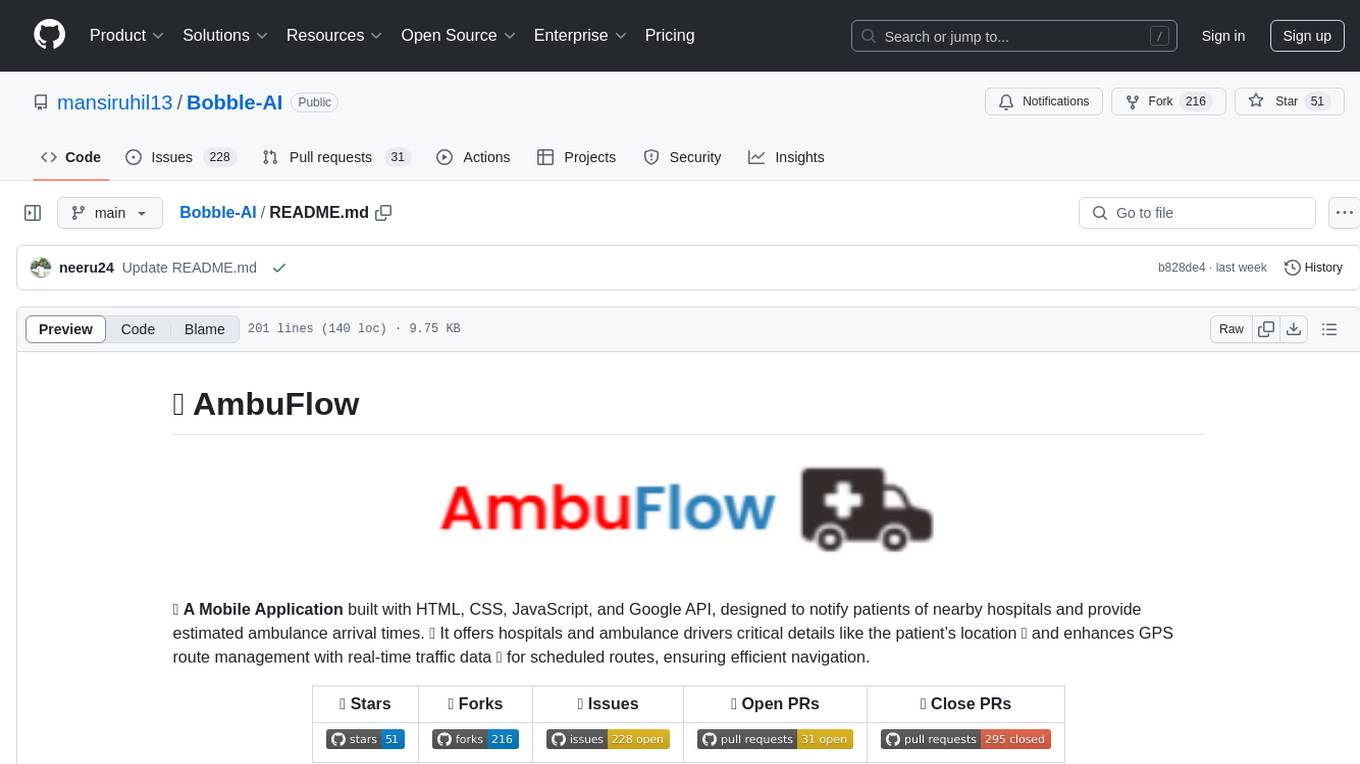
Bobble-AI
AmbuFlow is a mobile application developed using HTML, CSS, JavaScript, and Google API to notify patients of nearby hospitals and provide estimated ambulance arrival times. It offers critical details like patient's location and enhances GPS route management with real-time traffic data for efficient navigation. The app helps users find nearby hospitals, track ambulances in real-time, and manage ambulance routes based on traffic and distance. It ensures quick emergency response, real-time tracking, enhanced communication, resource management, and a user-friendly interface for seamless navigation in high-stress situations.

ros-mcp-server
The ros-mcp-server repository contains a ROS (Robot Operating System) package that provides a server for Multi-Contact Planning (MCP) in robotics. The server facilitates the planning of multiple contacts between a robot and its environment, enabling complex manipulation tasks. It includes functionalities for collision checking, motion planning, and contact stability analysis. This tool is designed to enhance the capabilities of robotic systems by enabling them to perform tasks that involve multiple points of contact with the environment. The repository includes documentation and examples to help users integrate the MCP server into their robotic applications.
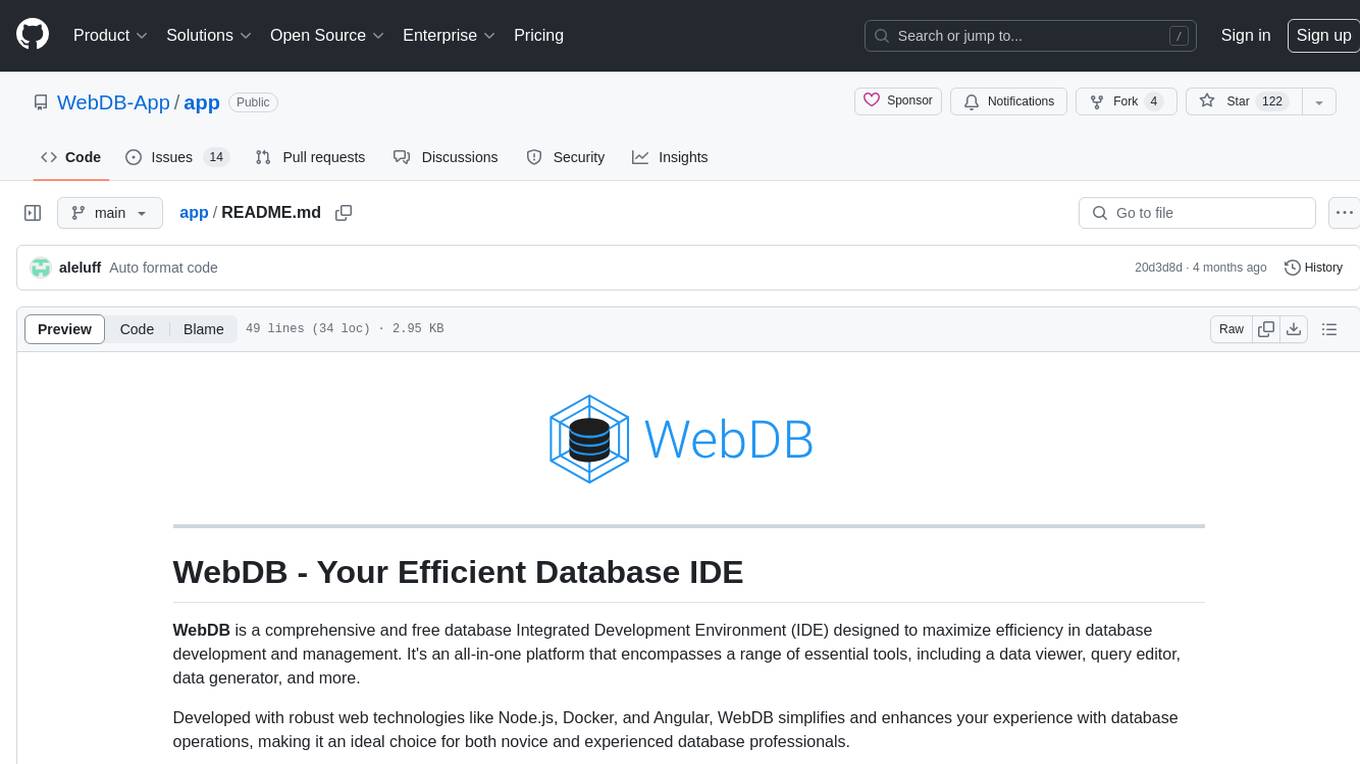
app
WebDB is a comprehensive and free database Integrated Development Environment (IDE) designed to maximize efficiency in database development and management. It simplifies and enhances database operations with features like DBMS discovery, query editor, time machine, NoSQL structure inferring, modern ERD visualization, and intelligent data generator. Developed with robust web technologies, WebDB is suitable for both novice and experienced database professionals.
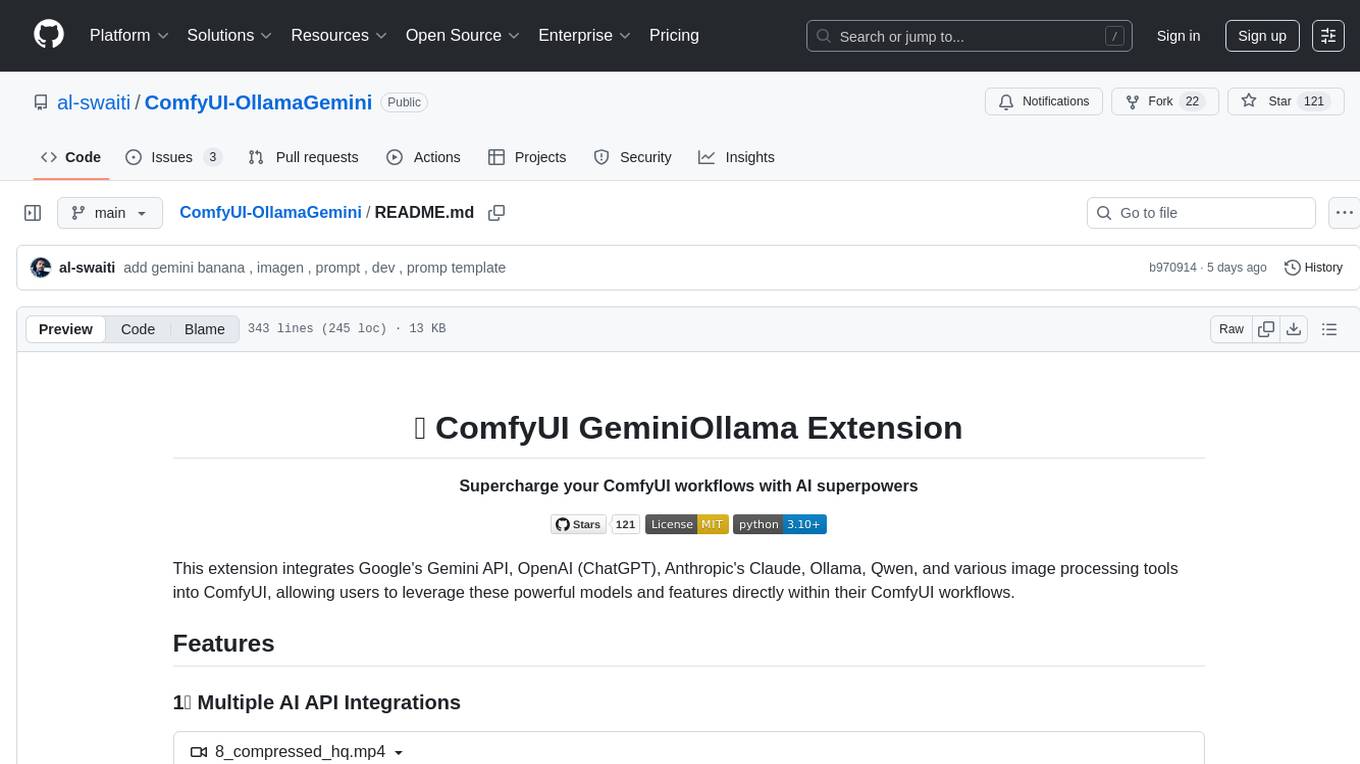
ComfyUI-OllamaGemini
ComfyUI GeminiOllama Extension integrates Google's Gemini API, OpenAI (ChatGPT), Anthropic's Claude, Ollama, Qwen, and image processing tools into ComfyUI for leveraging powerful models and features directly within workflows. Features include multiple AI API integrations, advanced prompt engineering, Gemini image generation, background removal, SVG conversion, FLUX resolutions, ComfyUI Styler, smart prompt generator, and more. The extension offers comprehensive API integration, advanced prompt engineering with researched templates, high-quality tools like Smart Prompt Generator and BRIA RMBG, and supports video & audio processing. It provides a single interface to access powerful AI models, transform prompts into detailed instructions, and use various tools for image processing, styling, and content generation.
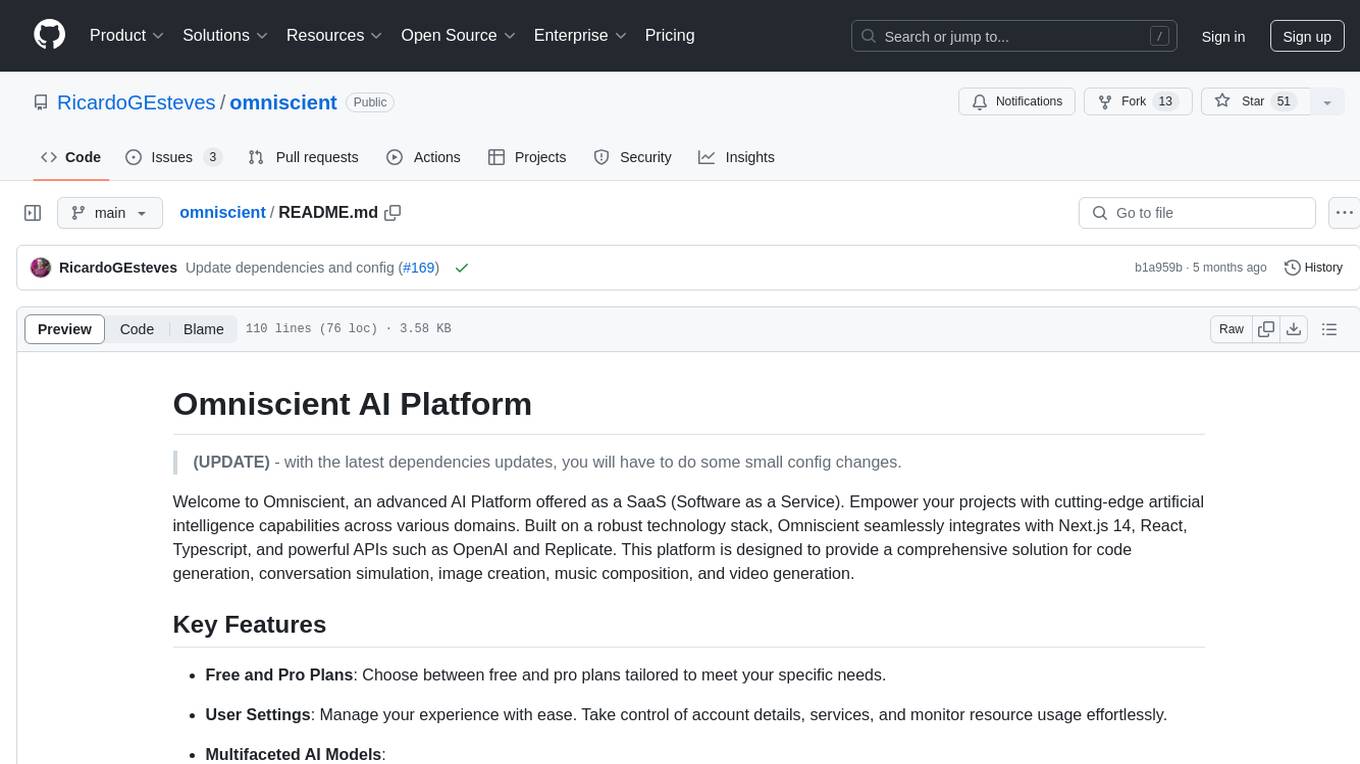
omniscient
Omniscient is an advanced AI Platform offered as a SaaS, empowering projects with cutting-edge artificial intelligence capabilities. Seamlessly integrating with Next.js 14, React, Typescript, and APIs like OpenAI and Replicate, it provides solutions for code generation, conversation simulation, image creation, music composition, and video generation.
For similar tasks

griptape
Griptape is a modular Python framework for building AI-powered applications that securely connect to your enterprise data and APIs. It offers developers the ability to maintain control and flexibility at every step. Griptape's core components include Structures (Agents, Pipelines, and Workflows), Tasks, Tools, Memory (Conversation Memory, Task Memory, and Meta Memory), Drivers (Prompt and Embedding Drivers, Vector Store Drivers, Image Generation Drivers, Image Query Drivers, SQL Drivers, Web Scraper Drivers, and Conversation Memory Drivers), Engines (Query Engines, Extraction Engines, Summary Engines, Image Generation Engines, and Image Query Engines), and additional components (Rulesets, Loaders, Artifacts, Chunkers, and Tokenizers). Griptape enables developers to create AI-powered applications with ease and efficiency.
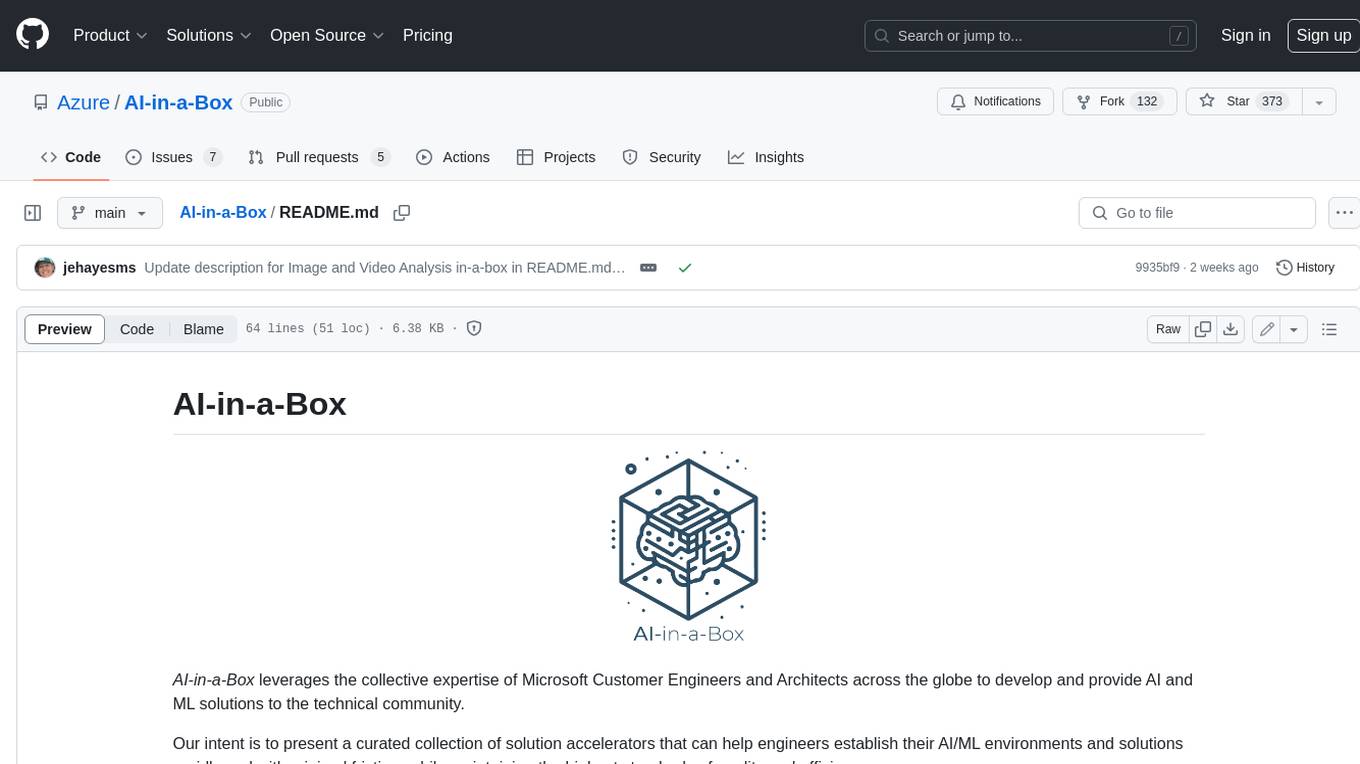
AI-in-a-Box
AI-in-a-Box is a curated collection of solution accelerators that can help engineers establish their AI/ML environments and solutions rapidly and with minimal friction, while maintaining the highest standards of quality and efficiency. It provides essential guidance on the responsible use of AI and LLM technologies, specific security guidance for Generative AI (GenAI) applications, and best practices for scaling OpenAI applications within Azure. The available accelerators include: Azure ML Operationalization in-a-box, Edge AI in-a-box, Doc Intelligence in-a-box, Image and Video Analysis in-a-box, Cognitive Services Landing Zone in-a-box, Semantic Kernel Bot in-a-box, NLP to SQL in-a-box, Assistants API in-a-box, and Assistants API Bot in-a-box.
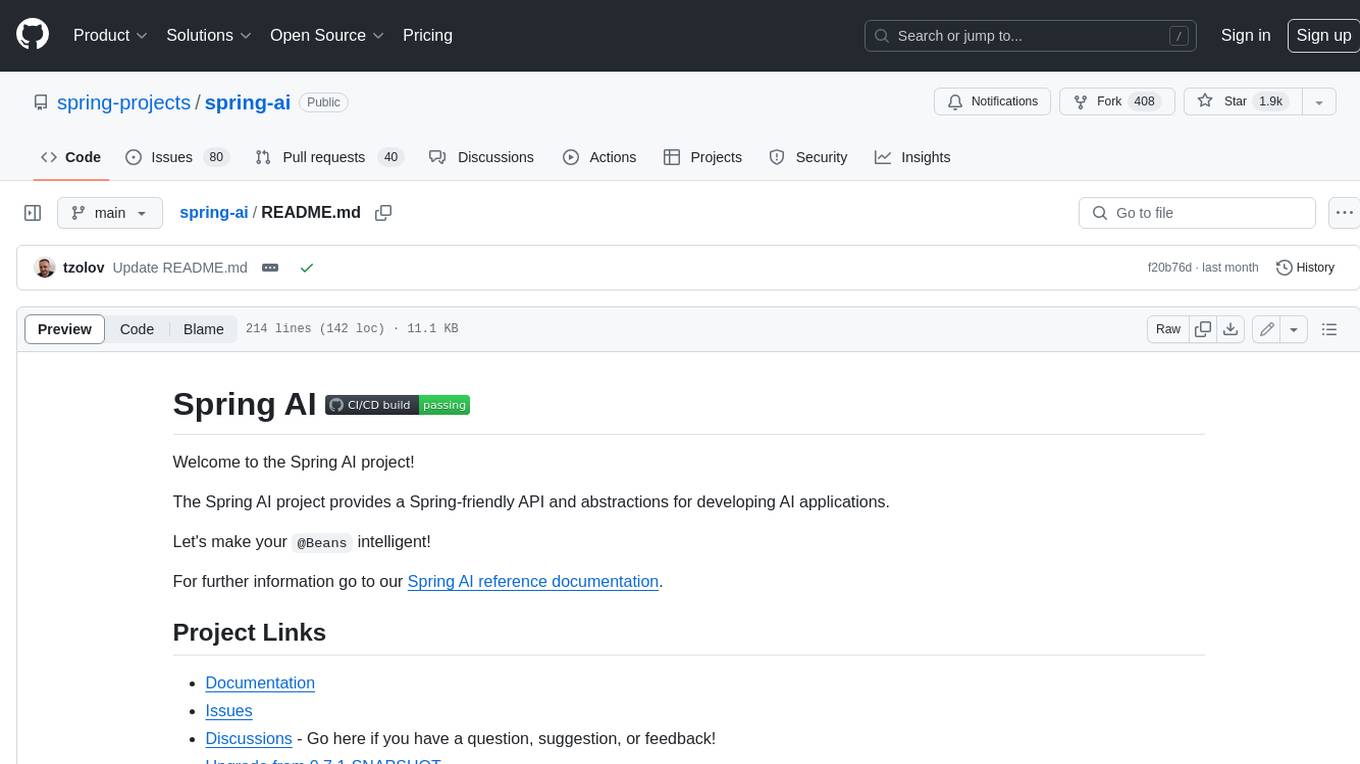
spring-ai
The Spring AI project provides a Spring-friendly API and abstractions for developing AI applications. It offers a portable client API for interacting with generative AI models, enabling developers to easily swap out implementations and access various models like OpenAI, Azure OpenAI, and HuggingFace. Spring AI also supports prompt engineering, providing classes and interfaces for creating and parsing prompts, as well as incorporating proprietary data into generative AI without retraining the model. This is achieved through Retrieval Augmented Generation (RAG), which involves extracting, transforming, and loading data into a vector database for use by AI models. Spring AI's VectorStore abstraction allows for seamless transitions between different vector database implementations.

ragstack-ai
RAGStack is an out-of-the-box solution simplifying Retrieval Augmented Generation (RAG) in GenAI apps. RAGStack includes the best open-source for implementing RAG, giving developers a comprehensive Gen AI Stack leveraging LangChain, CassIO, and more. RAGStack leverages the LangChain ecosystem and is fully compatible with LangSmith for monitoring your AI deployments.
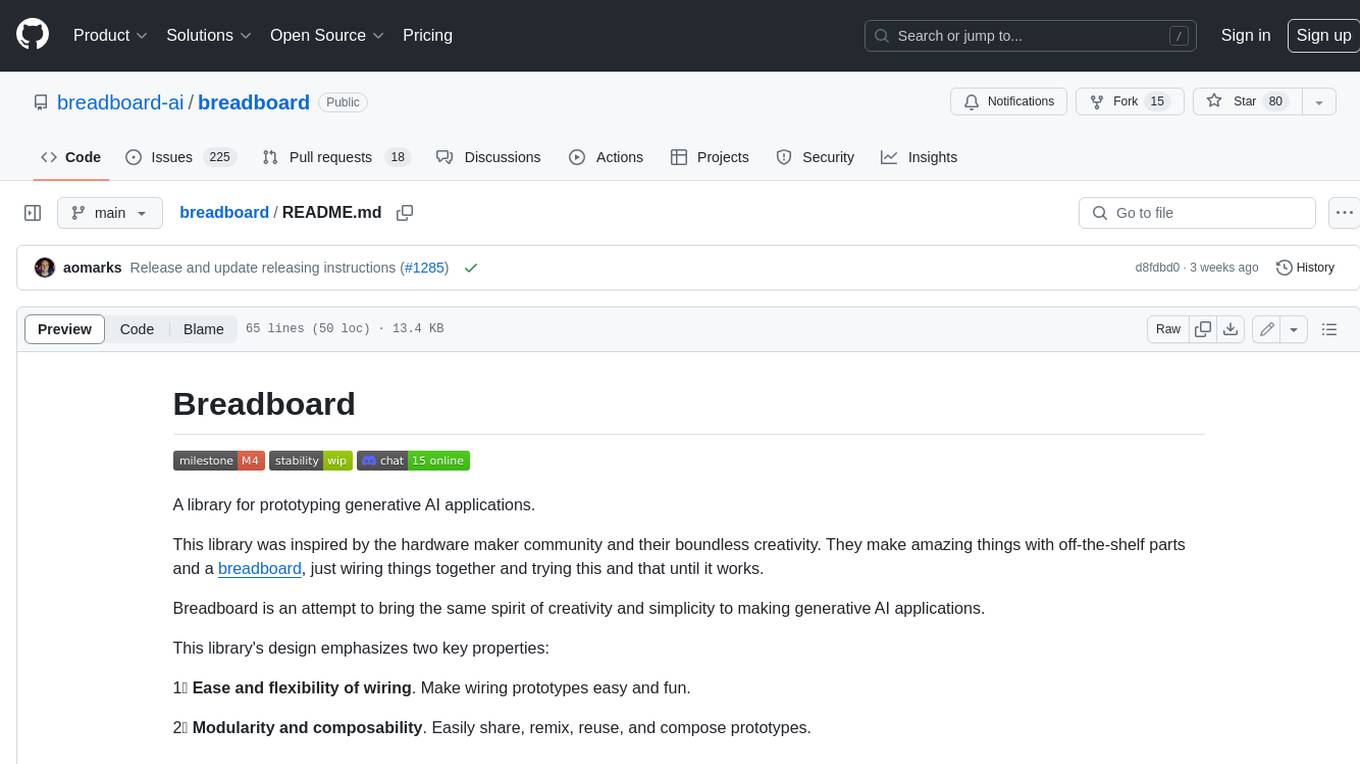
breadboard
Breadboard is a library for prototyping generative AI applications. It is inspired by the hardware maker community and their boundless creativity. Breadboard makes it easy to wire prototypes and share, remix, reuse, and compose them. The library emphasizes ease and flexibility of wiring, as well as modularity and composability.
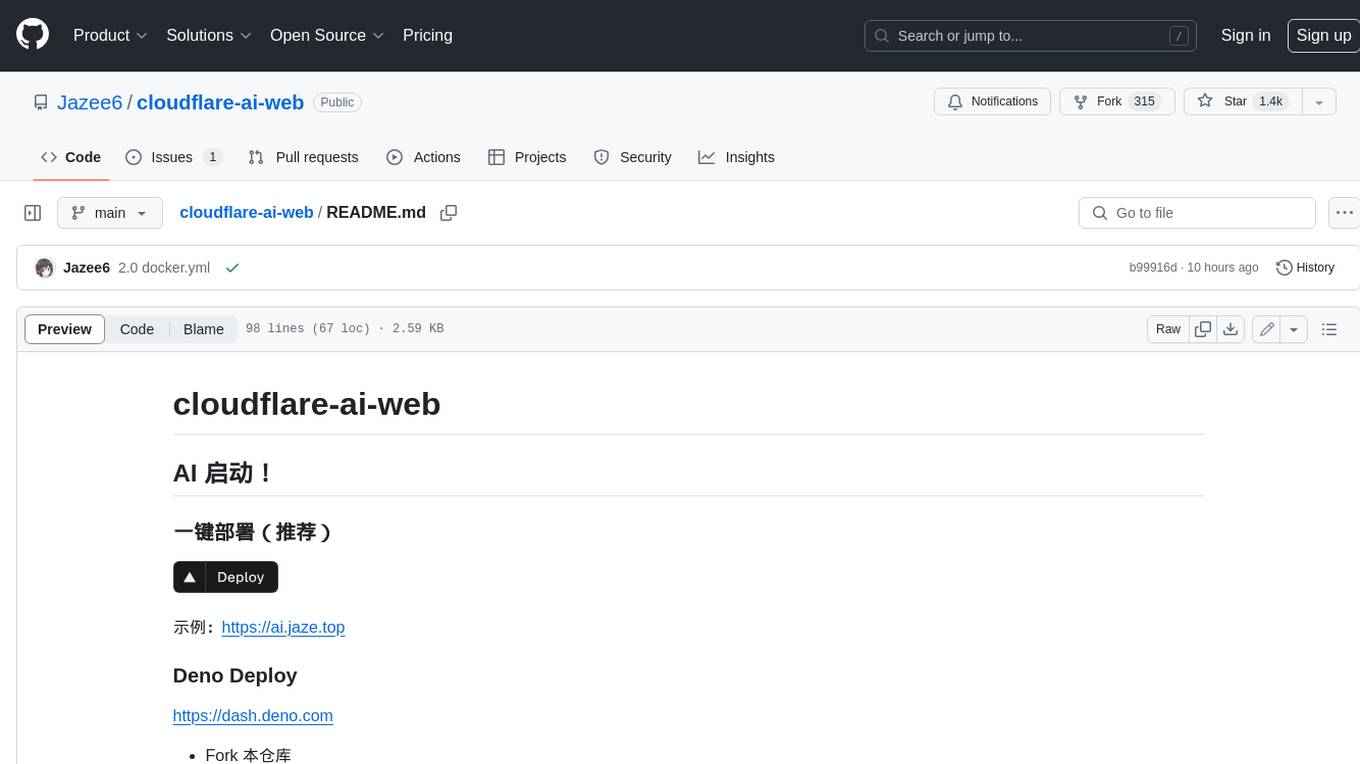
cloudflare-ai-web
Cloudflare-ai-web is a lightweight and easy-to-use tool that allows you to quickly deploy a multi-modal AI platform using Cloudflare Workers AI. It supports serverless deployment, password protection, and local storage of chat logs. With a size of only ~638 kB gzip, it is a great option for building AI-powered applications without the need for a dedicated server.
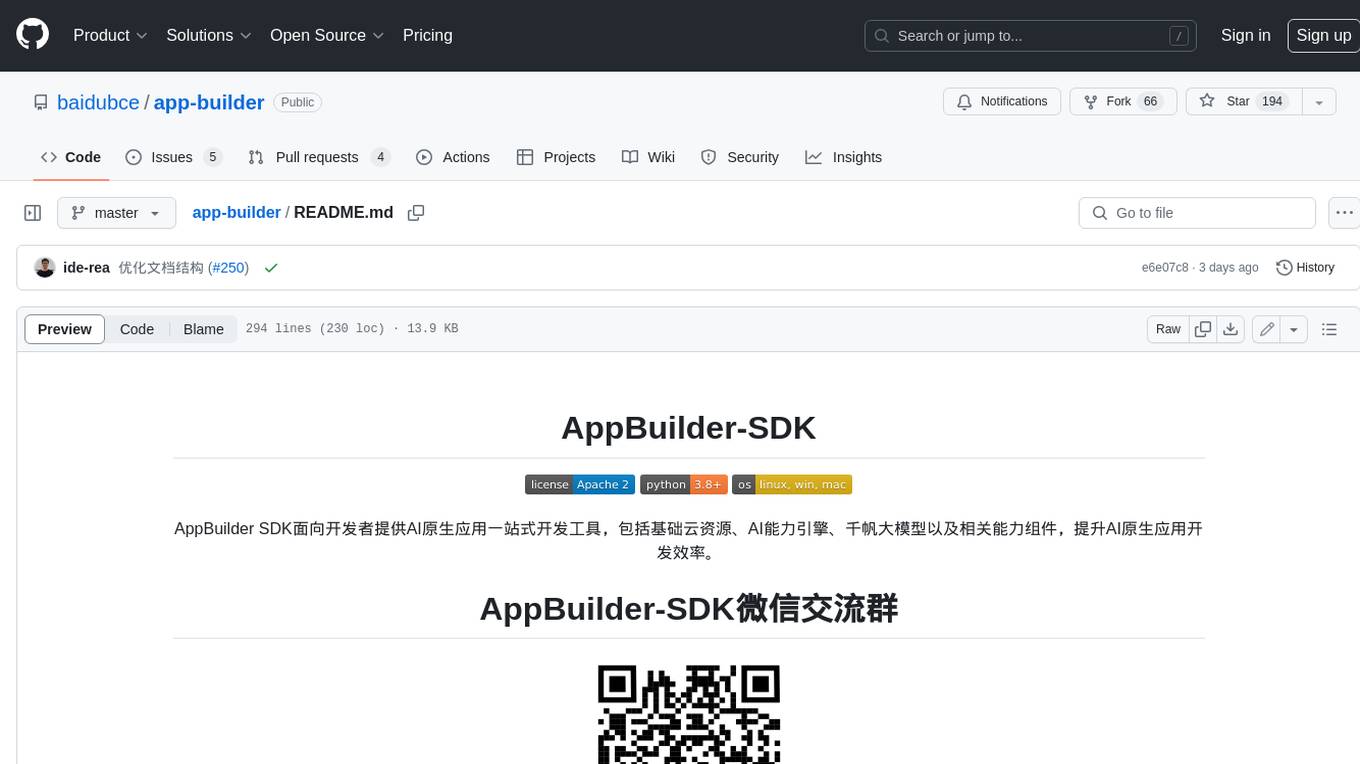
app-builder
AppBuilder SDK is a one-stop development tool for AI native applications, providing basic cloud resources, AI capability engine, Qianfan large model, and related capability components to improve the development efficiency of AI native applications.
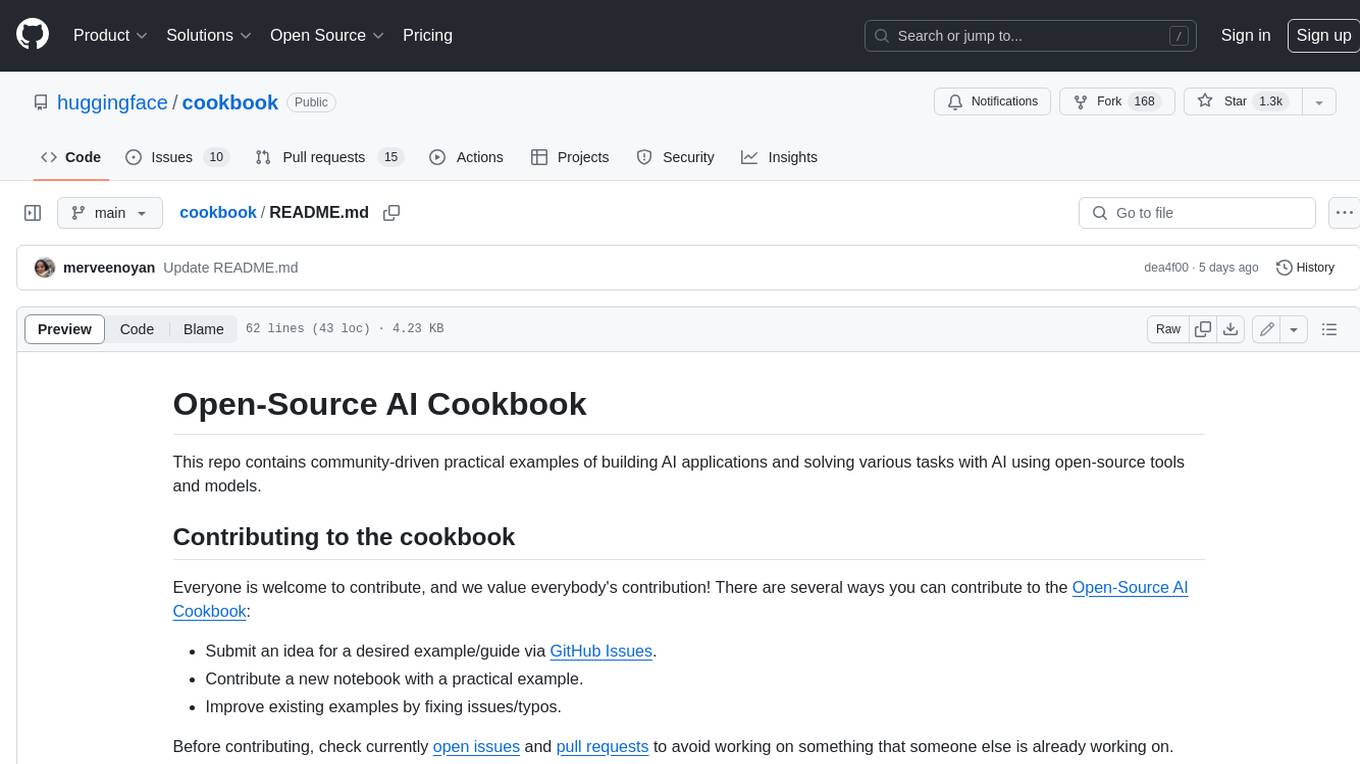
cookbook
This repository contains community-driven practical examples of building AI applications and solving various tasks with AI using open-source tools and models. Everyone is welcome to contribute, and we value everybody's contribution! There are several ways you can contribute to the Open-Source AI Cookbook: Submit an idea for a desired example/guide via GitHub Issues. Contribute a new notebook with a practical example. Improve existing examples by fixing issues/typos. Before contributing, check currently open issues and pull requests to avoid working on something that someone else is already working on.
For similar jobs

sweep
Sweep is an AI junior developer that turns bugs and feature requests into code changes. It automatically handles developer experience improvements like adding type hints and improving test coverage.

teams-ai
The Teams AI Library is a software development kit (SDK) that helps developers create bots that can interact with Teams and Microsoft 365 applications. It is built on top of the Bot Framework SDK and simplifies the process of developing bots that interact with Teams' artificial intelligence capabilities. The SDK is available for JavaScript/TypeScript, .NET, and Python.

ai-guide
This guide is dedicated to Large Language Models (LLMs) that you can run on your home computer. It assumes your PC is a lower-end, non-gaming setup.

classifai
Supercharge WordPress Content Workflows and Engagement with Artificial Intelligence. Tap into leading cloud-based services like OpenAI, Microsoft Azure AI, Google Gemini and IBM Watson to augment your WordPress-powered websites. Publish content faster while improving SEO performance and increasing audience engagement. ClassifAI integrates Artificial Intelligence and Machine Learning technologies to lighten your workload and eliminate tedious tasks, giving you more time to create original content that matters.

chatbot-ui
Chatbot UI is an open-source AI chat app that allows users to create and deploy their own AI chatbots. It is easy to use and can be customized to fit any need. Chatbot UI is perfect for businesses, developers, and anyone who wants to create a chatbot.

BricksLLM
BricksLLM is a cloud native AI gateway written in Go. Currently, it provides native support for OpenAI, Anthropic, Azure OpenAI and vLLM. BricksLLM aims to provide enterprise level infrastructure that can power any LLM production use cases. Here are some use cases for BricksLLM: * Set LLM usage limits for users on different pricing tiers * Track LLM usage on a per user and per organization basis * Block or redact requests containing PIIs * Improve LLM reliability with failovers, retries and caching * Distribute API keys with rate limits and cost limits for internal development/production use cases * Distribute API keys with rate limits and cost limits for students

uAgents
uAgents is a Python library developed by Fetch.ai that allows for the creation of autonomous AI agents. These agents can perform various tasks on a schedule or take action on various events. uAgents are easy to create and manage, and they are connected to a fast-growing network of other uAgents. They are also secure, with cryptographically secured messages and wallets.

griptape
Griptape is a modular Python framework for building AI-powered applications that securely connect to your enterprise data and APIs. It offers developers the ability to maintain control and flexibility at every step. Griptape's core components include Structures (Agents, Pipelines, and Workflows), Tasks, Tools, Memory (Conversation Memory, Task Memory, and Meta Memory), Drivers (Prompt and Embedding Drivers, Vector Store Drivers, Image Generation Drivers, Image Query Drivers, SQL Drivers, Web Scraper Drivers, and Conversation Memory Drivers), Engines (Query Engines, Extraction Engines, Summary Engines, Image Generation Engines, and Image Query Engines), and additional components (Rulesets, Loaders, Artifacts, Chunkers, and Tokenizers). Griptape enables developers to create AI-powered applications with ease and efficiency.



